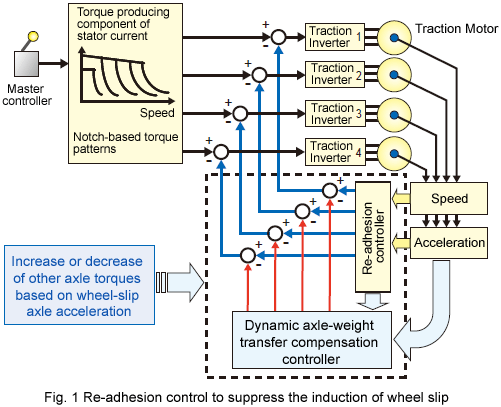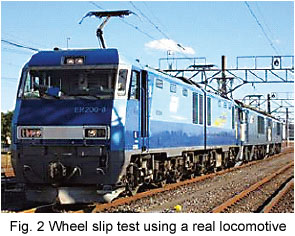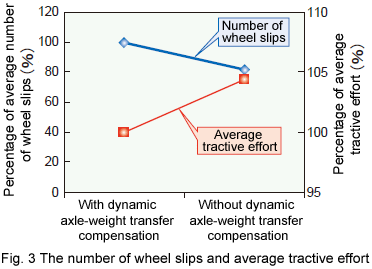When a wheel slip occurs on a certain axle or when re-adhesion control is executed, the tractive force of the wheel-slip axle changes and a rotating moment acts, which causes pitching of the bogie and the carbody that receives the tractive force. As a result, a change occurs in the weight acting on other axles in adhesion status, and wheel slips are likely to be induced. If re-adhesion control can be conducted in consideration of changes in the weight acting on other axles as a result of axle-weight transfer from the wheel-slip axle, the use of adhesive force can be optimized.
Accordingly, the RTRI developed a control system designed to reduce the induction of wheel slip in consideration of axle-weight changes caused by other wheel slips. Specifically, the torque of other axles is increased or decreased based on the acceleration of the wheel-slip axle to achieve dynamic axle-weight transfer compensation. The control method was applied to an EH200-type DC electric locomotive, constituting a re-adhesion control system that suppresses the induction of wheel slip (Fig. 1).
To verify the effectiveness of the control method, the RTRI conducted a water sprinkling wheel-slip test (Fig. 2). The results indicated that the number of wheel slips (or the number of wheel slip re-adhesion controls conducted) decreases by about 20% on average, and that the average tractive effort increases by 4% (Fig. 3), thus that tractive effort is enhanced by reducing frequent wheel-slips.
In this time, the RTRI demonstrated the brand-new re-adhesion control effects by a locomotive with individual axle drive. We are attempting to apply this technology to locomotives with bogie-controlled drive (one inverter-two motor drive).
|





